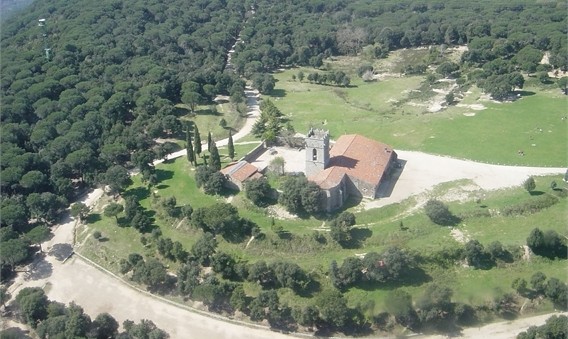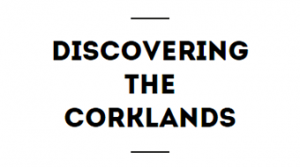Each is a well-defined massif that run parallel to the coast, forming part of the coastal mountain range. The geographical location, topography and climatic variations between the inland slopes and those overlooking the sea provide the diverse range of environments within the Reserve. Its proximity to the sea has favoured the development of luxuriant vegetation in addition to numerous Central European and even Atlantic species.
The protected area is 15,010 hectares; of these, 2,241 are of pure cork oak and 5,876 cork oaks and pines.

Montnegre and El Corredor Nature Reserve. Photo: Lluís Català
VEGETATION, UNIQUE FLORA AND FAUNA
The Park is heavily forested and includes a wide variety of plant communities of real significance, hence the mycological and biological interest of the two massifs.
Most widespread are the Holm oak groves but at the top of the Montnegre African oaks and big-leaf oaks and some beeches are found. In shadier areas, between hazels and oaks, chestnuts thrive in important numbers. This unspoilt, dense forest allows forest-based species such as wild boar, civet cat, common dormouse, squirrel, goshawk, woodpecker, jay and the white snake to thrive too.
Central European species also live here, like the marten, the red-backed vole or the grey dormouse. Recently too, various species of bat, rare in Catalonia, have been identified and the herbivore, the roe deer, has been introduced. Open areas are pretty scarce but provide habitat for predators such as short-toed eagles, buzzards, foxes, and lizards.

Hoopoe. Photo: ACER

Hermitage of El Corredor. Photo: Archive Montnegre and El Corredor
HERITAGE
Since ancient times, Man has come to settle in these lands, and proof of this are, for example, the dolmens Piedra Arca and Piedra Gentil. Also of note are Iberian remains at Turo del Vent and Puig de Castell and many medieval churches, chapels and hermitages. One such hermitage stands at the highest point of El Corredor, a hermitage in 1544, it was later rebuilt in late Gothic style. Facing the sea stands the Romanesque church of Sant Martí de Mata.
The Montnegre area has the most isolated parishes, and in high places hermitages and the ruins of the Monastery of Roca-Rossa, a must for nature lovers and those who enjoy history.
TOWNS IN THE RESERVE
In El Corredor and Montnegre we find the following boroughs, all in the province of Barcelona: Arenys de Munt, Dosrius, Fogars de Montclús, Llinars del Vallès, Mataró, Palafolls, Pineda de Mar, Sant Cebrià de Vallalta, Sant Celoni, Sant Iscle de Vallalta, Tordera, Vallgorguina and Vilalba Sasserra.
TOURS AND FOOTPATHS
The reserve offers a lot of guided tours that will help you to understand the landscape, its fauna, flora and history. You will also find mountain bike routes.
SERVICES AND FURTHER INFORMATION
The area has the following services:
- Car parking
- Picnic Areas
- Visitor Centre
- Signposted itineraries
- Informative materials
- Guided tours
Montnegre and El Corredor Natural Park Office
Església, 13 – 2º
08471 Vallgorguina, Barcelona
T. 938 679 452
p.montnegre@diba.cat
You can find other information points in: Hortsavinyà, Santurari del Corredor, Sant Cebrià de Vallalta, Arenys de Munt, Sant Iscle de Vallalta, Market Tordera, Fogars de la Selva and Sant Celoni.
Sources: Information provided by ACER. Associació per a la Conservació de l’Entorn i la Recerca; and extracted from http://parcs.diba.cat, www.arenysdemunt.cat, www.dosrius.cat, www.fogarsdemontclus.cat, www.llinarsdelvalles.cat, www.mataro.cat, www.palafolls.cat, www.pinedademar.org, www.stcebria.net, www.santceloni.cat, www.santiscle.cat, www.tordera.cat, www.vallgorguina.cat, www.vilalbasasserra.cat and Wikipedia.

 Español
Español Català
Català English
English Français
Français Português
Português Italiano
Italiano Deutsch
Deutsch